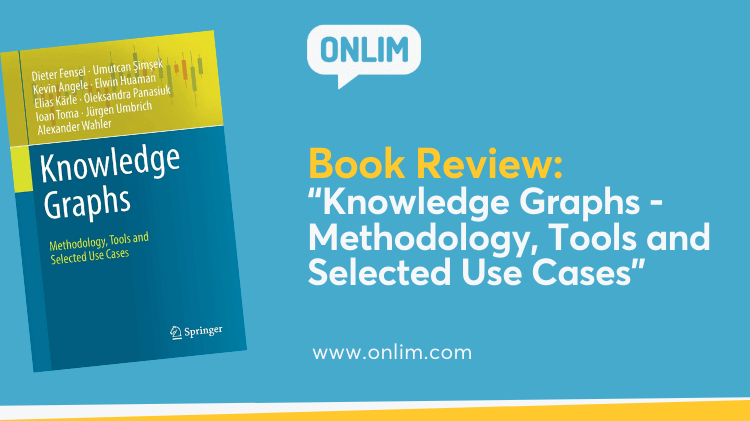Book Review: “Knowledge Graphs – Methodology, Tools and Selected Use Cases”
As a spin-off of the University of Innsbruck, we at Onlim continue to work closely with our scientific colleagues. Not just for current projects and the ongoing transfer of knowledge and technology, but also for the creation of relevant content around our core topics. The latest result of this cooperation is the book “Knowledge Graphs – Methodology, Tools and Selected Use Cases” – which we would like to briefly introduce here.
The book was published by Springer as an e-book and soft cover edition and written by scientific staff from the STI (Semantic Technology Institute of the University of Innsbruck) and experts from Onlim under the overall direction of Univ.-Prof. Dr. Dieter Fensel (who is also a co-founder of Onlim). It offers an overview of the common methods and tools for developing Knowledge Graphs, their areas of application and use cases for conversational interfaces such as chatbots and voice assistants.
The book is written in English and includes the following 5 chapters:
1. What is a Knowledge Graph
Based on the introduction of the term from Google, this section describes what Knowledge Graphs actually are, what principles they are based on and provides a brief overview of existing Knowledge Graphs.
2. How to build a Knowledge Graph
The most extensive chapter of the book explains the individual steps and technologies that are essential for the creation of a Knowledge Graph. As part of an overall process model, the respective process sections are described in detail and comprehensively.
These include
- Knowledge Creation
- Knowledge Hosting
- Knowledge Curation
- Knowledge Deployment
3. How to use a Knowledge Graph
In this part of the book, you’ll learn how Knowledge Graphs are used and what advantages they offer, for example with regard to organic search results on Google, or as a knowledge base for Conversational AI applications such as chatbots and voice assistants.
4. Why we need Knowledge Graphs: Use Cases
The fourth section of the book is especially interesting for practitioners. Here, the use of Knowledge Graphs is examined on the basis of specific use cases in two industries (tourism and energy industry).
5. Conclusions
In addition to a brief summary, the final chapter provides an outlook on future developments.
Our conclusion:
If you want to learn more about Knowledge Graphs from a scientific as well as company perspective, this book provides the latest and comprehensive analysis.
Order the book here: “Knowledge Graphs – Methodology, Tools and Use Cases” (Dieter Fensel, Umutcan Simsek, Kevin Angele, Elwin Huaman, Elias Kärle, Oleksandra Panasiuk, Ioan Toma, Jürgen Umbrich, Alexander Wahler).
To find out how Onlim uses Knowledge Graphs graphs for better conversations with chatbots and voice assistants, contact us right here.
Related articles that you might like:
What are Large Language Models (LLMs)?
March 18th, 2024|
What are chatbots and how do they work?
November 23rd, 2023|
The AI Act and its impact on the use of chatbots
October 27th, 2023|



